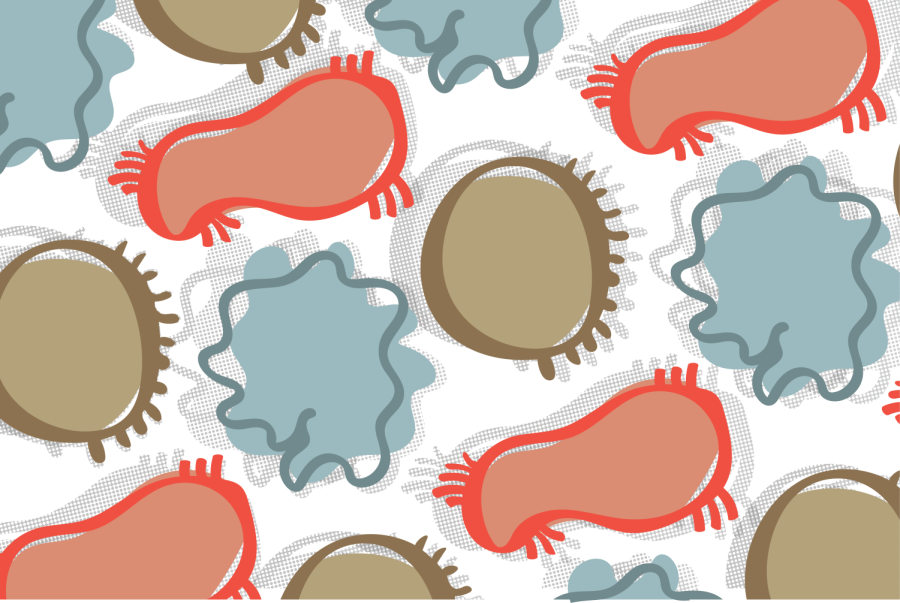A Cell study published last week showed the antibodies created by RNA vaccines for HIV and Zika virus can cross the placental barrier and inoculate baby rabbits.
The authors noted a major route for passage of infections is from mother to child shortly after birth, and so some way to mitigate the spread from an infected mother to an uninfected child is needed.
This is particularly true during disease outbreaks, like in 2016 with Zika because this virus was especially harmful to newborns. Another application of this strategy would be for HIV, which can linger in the body throughout life and eventually develop into AIDS.
In mammals like humans and rabbits, the placenta provides a barrier during pregnancy that prevents the growing fetus from being subjected to most infections. However, some infections and antibodies can get through this barrier, allowing the growing baby to develop its own immunity, or gain what is called “passive immunity” from the mother’s antibodies. In this way, vaccines can potentially help babies gain immunity before birth to prevent transmission of infections.
For this study, the researchers used a different form of RNA vaccine than with the mRNA COVID-19 vaccines. The RNA used in this study is what is known as “self-amplifying replicon RNA” (repRNA), which means the RNA within the vaccine can self-replicate many times and produce a large dose of antibodies in the body.
The researchers found their vaccines were able to produce a large enough antibody response in pregnant rabbits that some of the antibodies were then transferred through the placenta into the baby rabbits — kits — before they were born. The kits then showed antibodies present in their blood after birth without being vaccinated themselves and without changes of litter size, suggesting there was no obvious pregnancy loss associated with the vaccines.
While these results look promising, the researchers did not look at whether the kits could be infected with these viruses after receiving passive immunity from their mothers. Plus, looking at litter size is not a full measure for changes in pregnancy health and neonatal health.
This is where we must consider and set our benchmarks before these types of vaccines are relied upon in future disease outbreaks.
Obviously, we need to be able to see that there is a real reduction in infection transmission in the newborns born with these passively delivered antibodies before we move forward. If the point of these vaccinations is to reduce transmissibility, then that needs to be a minimum requirement.
Additionally, scientists must conduct extensive safety research, and look for any changes in development or health in the newborns. This includes tracking individual fetuses in-utero via ultrasound or other means, not just looking at litter size.
Then, the issue becomes a simple matter of relative risk assessment.
In the cases of Zika and HIV, one can see the potential for trading a small risk of a vaccine to prevent the much larger health risks associated with these viruses.
However, if the vaccines pose the potential for serious side effects up to and including pregnancy loss or developmental defects, that fact should be clear and the vaccines should only be recommended with extreme caution.
New tools can be exciting. Once a new technology shows some success, it can be tempting to apply it widely and expect fantastic results. Caution and risk management are less exciting but equally important pieces to every new innovation, and must walk alongside the developments, especially where pregnancy and babies are concerned.
In the case of COVID-19 mRNA vaccines, studies on the effects during pregnancy have shown the mRNA vaccines themselves do not cross the placental barrier, and there has not been evidence of adverse effects in the placenta or overall pregnancy outcomes with the vaccine.
Instead, as with every other vaccine commonly given during pregnancy, the maternal antibodies resulting from the vaccine are transferred, giving the baby temporary, passive immunity.
Hopefully, the Zika and HIV repRNA vaccines will eventually prove to be safe and effective during pregnancy following this same strategy of passive immunity transfer. This would be a huge breakthrough in mitigating the spread of such horrible and insidious infections.
Regardless, in today’s age of patient-centered care in medicine, the pregnant mother should always have the final say about which vaccines or other treatments she wants to receive during her pregnancy. There is some level of risk associated with every intervention, and that decision should fall on the person taking on the risk.
With Zika and HIV, not everyone is at equal risk of contracting these viruses, so the exposure risk at that time and in that area will be a factor.
Even with evidence and examples from young and old vaccines, each new iteration or shifted vaccine strategy deserves the highest level of scrutiny we can possibly give it. Rigor in safety testing should always match if not exceed rigor in effectiveness. The only way to repair the schism between hesitant patients and recommending providers is rigorous study of the concerns, preferably before they hit the mass market.
Would you like Allison to follow up on this topic or explore something specific? Contact her at [email protected] with questions, comments or story ideas.
















